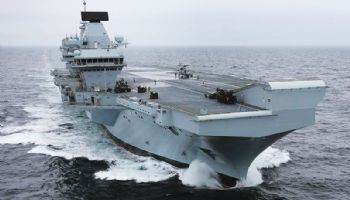
HMS Queen Elizabeth, the UK’s new £3 billion aircraft, carrier docked at its home port last week for the first time.
The 65,000-tonne ship has undergone seven weeks of sea trials since setting sail in June from Rosyth dockyard in Fife, where it was assembled.
It consists of nine blocks built in six UK shipyards: BAE Systems Surface Ships in Glasgow, Babcock in Appledore, Babcock in Rosyth, A&P Tyne in Hebburn, BAE Systems in Portsmouth and Cammell Laird in Birkenhead.
During the sea trials, everything was tested — from the propulsion system to the sewage-processing plant (the ship’s five galleys have been producing more than 3,000 meals a day for the 700 crew and additional contractors on board).
The 900ft-long carrier currently has no aircraft, but F-35B Lightning fighter jets are due to make their first trial flights from its deck next year, with 120 aircrew currently training in the USA. A flotilla of craft accompanied the ship as she sailed into the Solent before heading into Portsmouth.
Preparations for the arrival of the future flagship of the fleet saw more than 20,000 items — ranging from a human skull to sea mines — dredged up from Portsmouth Harbour.
The Ministry of Defence said specialist dredging vessels had removed 3.2 million m
3 of sediment — the equivalent of 1,280 Olympic swimming pools — during the dredging operation.